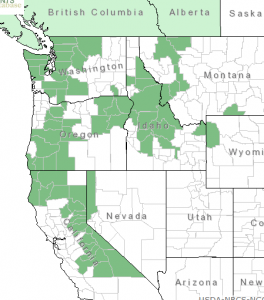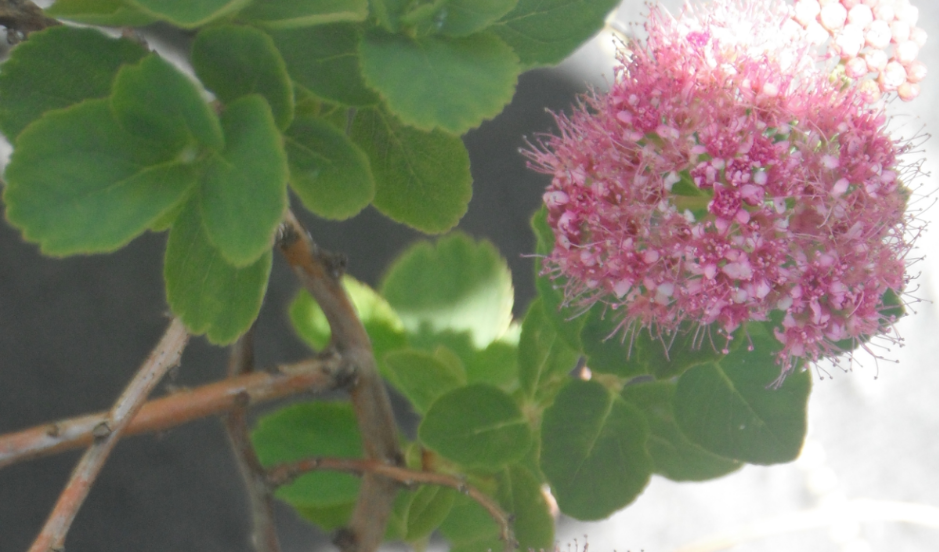Nootka Rose The Rose Family—Rosaceae
Rosa nutkana C. Presl
(Rose-uh noot-KAY-nuh)
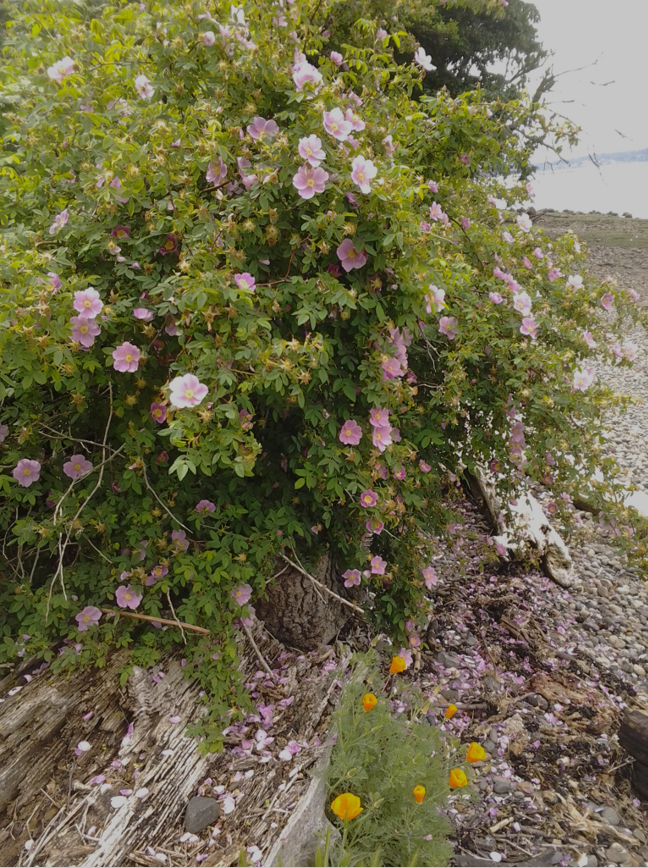 Names: Nutkana is derived from Nootka; Nootka Sound is a waterway on the west coast of Vancouver Island in British Columbia that was named after the Nuu-Chah-Nulth tribe that live in the area. Nootka Rose is sometimes called Common, Wild, or Bristly Rose. There are four recognized varieties whose names suggest differences in bristling.
Names: Nutkana is derived from Nootka; Nootka Sound is a waterway on the west coast of Vancouver Island in British Columbia that was named after the Nuu-Chah-Nulth tribe that live in the area. Nootka Rose is sometimes called Common, Wild, or Bristly Rose. There are four recognized varieties whose names suggest differences in bristling.
Relationships: There are over 100 species of rose world-wide and thousands of cultivated varieties. Most are native to Asia, but several are also found in Europe, North America and Northwest Africa. There are about 22 species native to the United States. We have 3 common species on the west side of the Cascades in our region: Rosa gymnocarpa, R. nutkana, & R. pisocarpa. R. woodsii is common on the east side of the Cascades.
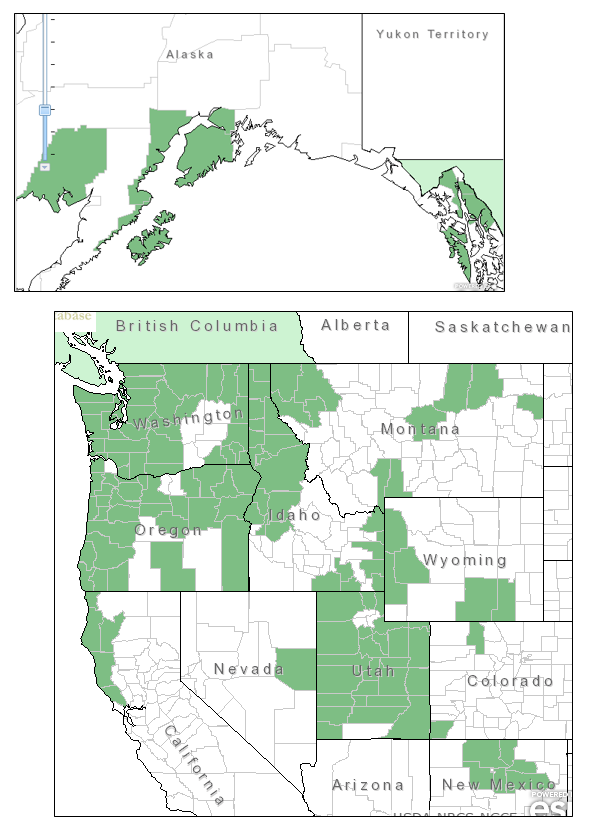
Distribution of Nootka Rose from USDA Plants Database
Distribution: Nootka Rose is found from southern Alaska to the northern California coast; east to Montana in the north and northern New Mexico in the south.
Growth: This species grows 2-9 feet (.5-3m.)
Habitat: Nootka Rose is found in a variety of habitats: shorelines, floodplains, streambanks, meadows, open forests and forest edges. Wetland designation: FAC, It is equally likely to occur in wetlands or non-wetlands.
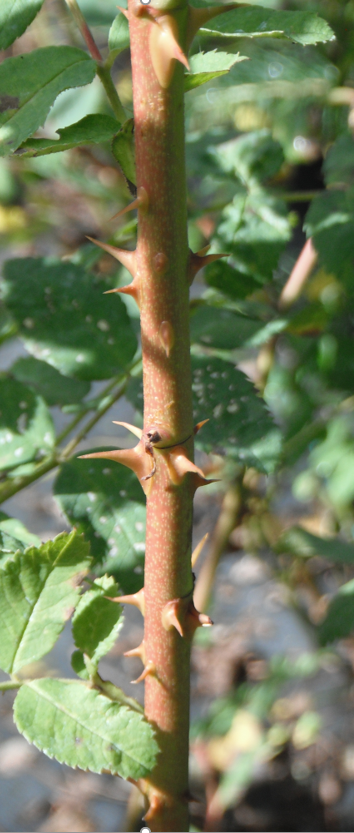
Rosa nutkana prickles are usually larger than Rosa pisocarpa prickles (which are usually more bristly).
Diagnostic characters: Nootka Rose is very difficult to distinguish from the Clustered Wild Rose, R. pisocarpa. Both have pink flowers. The major difference is that Nootka Rose has larger flowers that are usually borne singly (but sometimes in pairs or triplets) at the ends of branches. The stems of Nootka Rose are variously prickly; paired prickles arise at the base of each leaf. Leaves have 5-7 toothed leaflets, sometimes glandular, with more or less rounded tips. Fruits are relatively large (1-2cm), purplish-red hips.

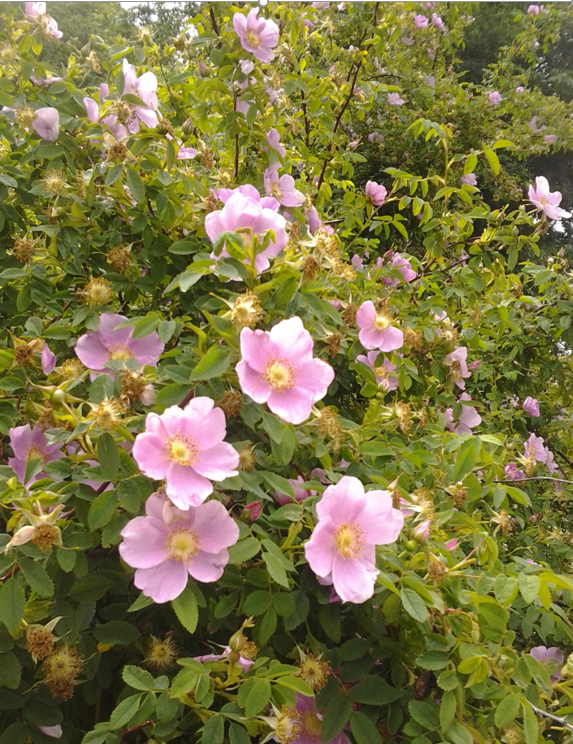 In the landscape, Nootka Rose is beautiful but can be aggressive. It is great as a barrier plant, growing into an impenetrable thicket. Its fragrance fills the air in a seaside habitat. It is valuable for stabilizing banks, especially along streams.
In the landscape, Nootka Rose is beautiful but can be aggressive. It is great as a barrier plant, growing into an impenetrable thicket. Its fragrance fills the air in a seaside habitat. It is valuable for stabilizing banks, especially along streams.
Phenology: Bloom time: May-July; Fruit ripens: Early fall, persisting through winter.
Propagation: Sow in fall or stratify at 40º F (4º C) for 140 days. Seeds may take two years to germinate; scarification and/or a warm stratification prior to the cold stratification may hasten germination. Division of the root crown and rhizomes is an easy method to propagate fewer, larger plants. Cuttings of semi-hardwood or hardwood are possible.
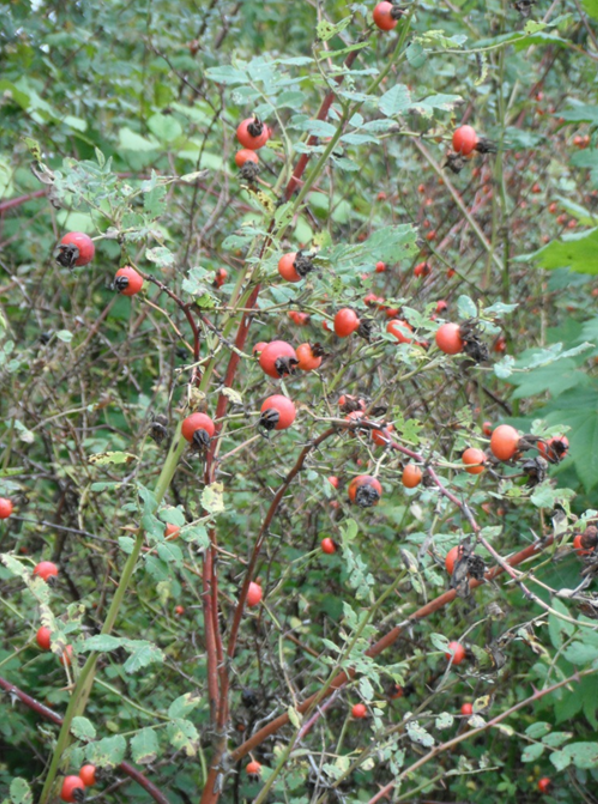 Use by People: Some natives ate the hips, raw or dried, or they boiled them to make a tea. The fruit tastes better after a frost. Care should be taken, however, there is a layer of hairs around the seeds (actually achenes); these hairs can cause irritation to the mouth and digestive tract. A decoction of the roots was used to treat sore throats or as an eyewash. The bark was used to make a tea to ease labor pains. Rose hips are sometimes used to make jams or jellies; they are rich in vitamins, such as A, C, & E.
Use by People: Some natives ate the hips, raw or dried, or they boiled them to make a tea. The fruit tastes better after a frost. Care should be taken, however, there is a layer of hairs around the seeds (actually achenes); these hairs can cause irritation to the mouth and digestive tract. A decoction of the roots was used to treat sore throats or as an eyewash. The bark was used to make a tea to ease labor pains. Rose hips are sometimes used to make jams or jellies; they are rich in vitamins, such as A, C, & E.
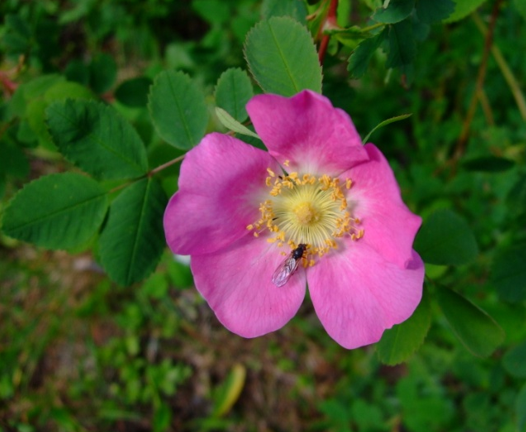 Use by Wildlife:
Use by Wildlife:
Nootka rose is important wildlife browse. (Roses are well known as “deer candy.”) Deer, elk, moose, caribou, bighorn sheep, bears, coyotes, and various rodents also eat the fruits. Squirrels, mice, beavers, and porcupines eat the twigs and leaves. Nootka rose thickets are used for nesting and escape cover by birds, including waterfowl, and, small mammals.
Links:
Consortium of Pacific Northwest Herbaria
WTU Herbarium Image Collection, Plants of Washington, Burke Museum
E-Flora BC, Electronic Atlas of the Flora of British Columbia
Jepson Eflora, University of California
Ladybird Johnson Wildflower Center
USDA Forest Service-Fire Effects Information System
Native Plants Network, Propagation Protocol Database
Native American Ethnobotany, University of Michigan, Dearborn

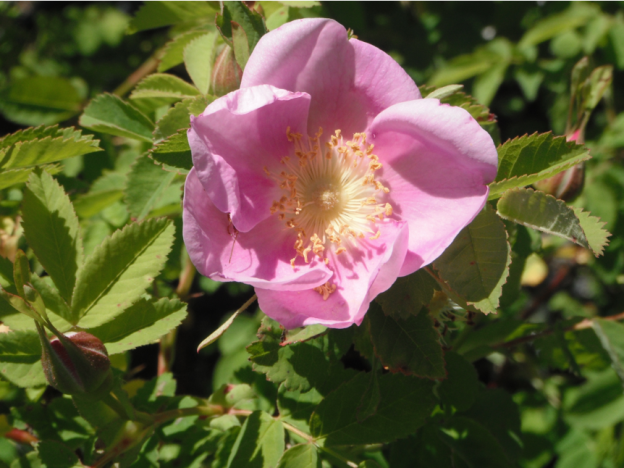
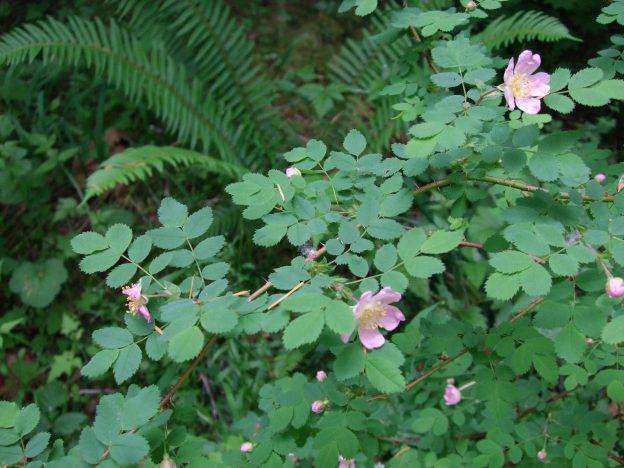
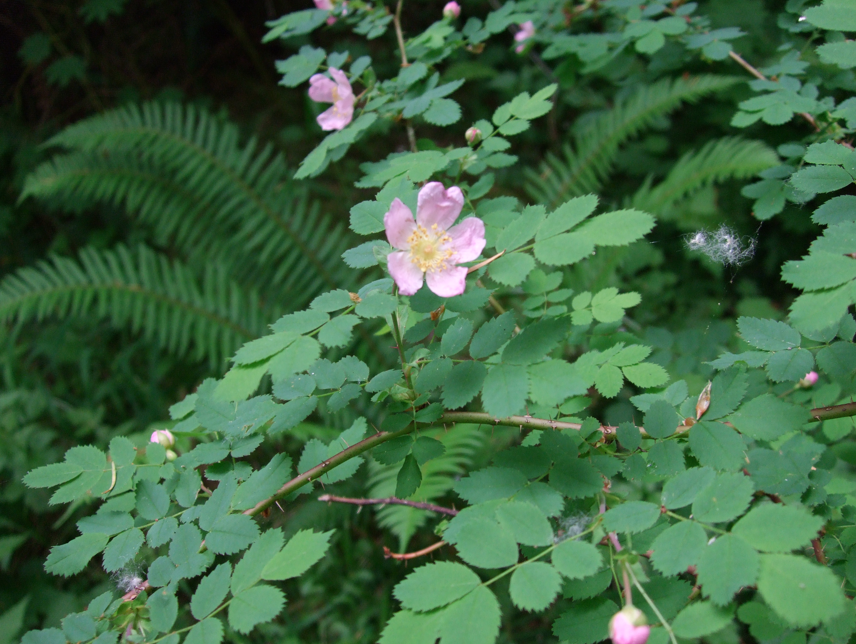 Names: Baldhip Rose is also sometimes called Wood Rose, Dwarf or Little Wild Rose. Baldhip and Gymnocarpa (meaning naked fruit), refer to the fact that the flower sepals do not remain attached to the fruit.
Names: Baldhip Rose is also sometimes called Wood Rose, Dwarf or Little Wild Rose. Baldhip and Gymnocarpa (meaning naked fruit), refer to the fact that the flower sepals do not remain attached to the fruit.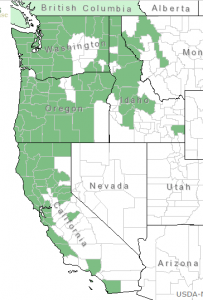
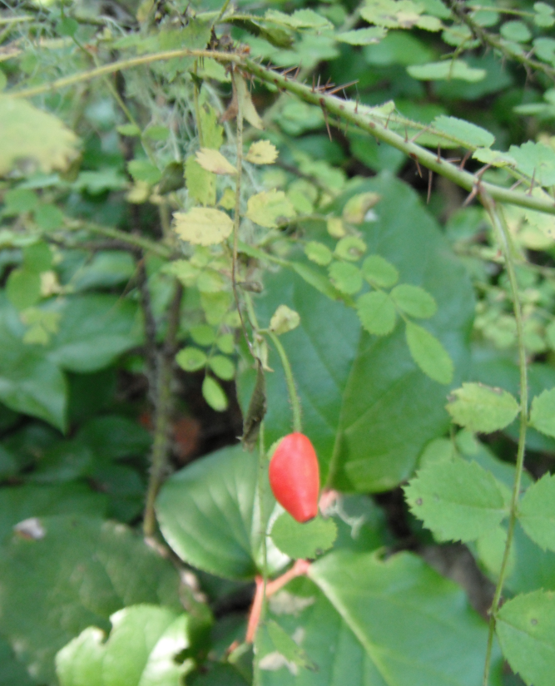 Diagnostic characters: Bald-hip Rose is the easiest to distinguish from the other roses. Its stems have many soft, bristly, straight prickles. Leaves have 5-9 toothed leaflets. Flowers are small, pale pink to rose, fragrant, and are usually borne singly at the ends of branches. Fruits are small, red, pear-shaped, berry-like hips, with no sepals remaining attached.
Diagnostic characters: Bald-hip Rose is the easiest to distinguish from the other roses. Its stems have many soft, bristly, straight prickles. Leaves have 5-9 toothed leaflets. Flowers are small, pale pink to rose, fragrant, and are usually borne singly at the ends of branches. Fruits are small, red, pear-shaped, berry-like hips, with no sepals remaining attached.
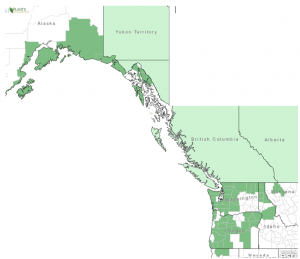
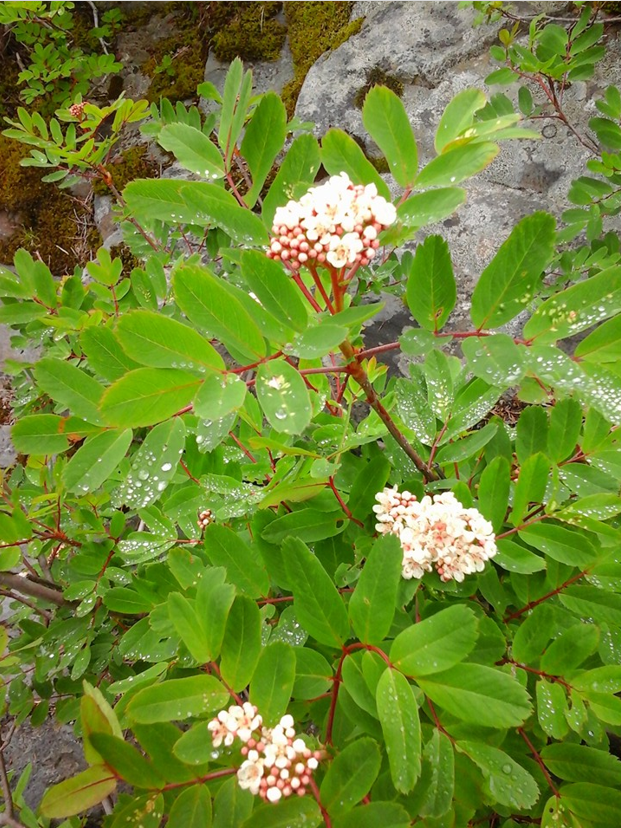
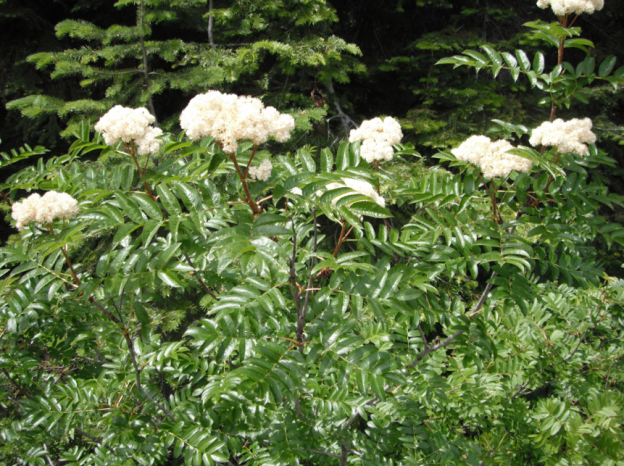
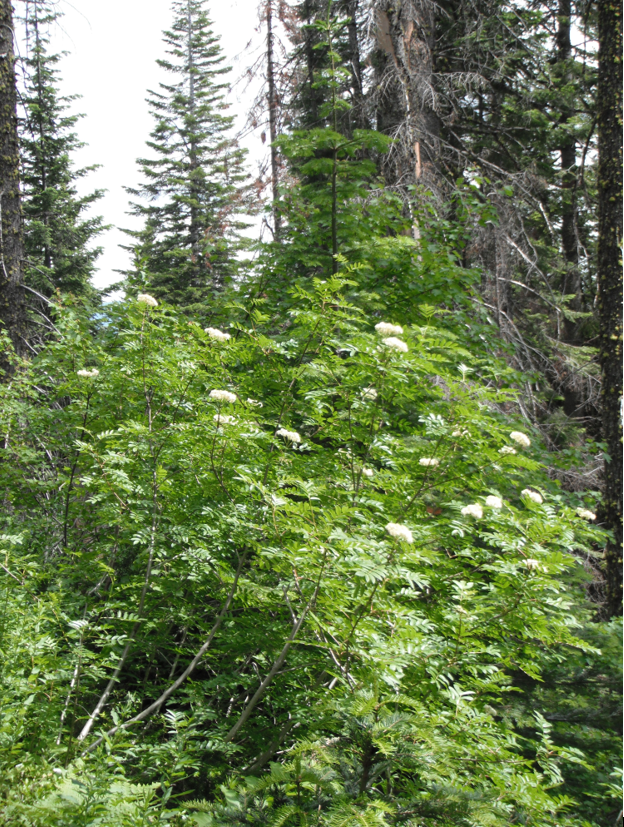 Names: Mountain Ashes also known as Rowans, Whitebeams, and Service Trees. True Ashes belong to the unrelated genus, Fraxinus. The word Rowan is thought to be from a Norse word for tree, or a Germanic word meaning “getting red,” referring to its fall foliage color and berries. Rowans were important trees in celtic mythology; the wood was used for Druid’s staffs, magic wands and dowsing rods. Scopulina means “of rocky places.” This species is also known as Rocky Mountain, Cascade, or Greene’s Mountain Ash, named after botanist, Edward Lee Greene.
Names: Mountain Ashes also known as Rowans, Whitebeams, and Service Trees. True Ashes belong to the unrelated genus, Fraxinus. The word Rowan is thought to be from a Norse word for tree, or a Germanic word meaning “getting red,” referring to its fall foliage color and berries. Rowans were important trees in celtic mythology; the wood was used for Druid’s staffs, magic wands and dowsing rods. Scopulina means “of rocky places.” This species is also known as Rocky Mountain, Cascade, or Greene’s Mountain Ash, named after botanist, Edward Lee Greene.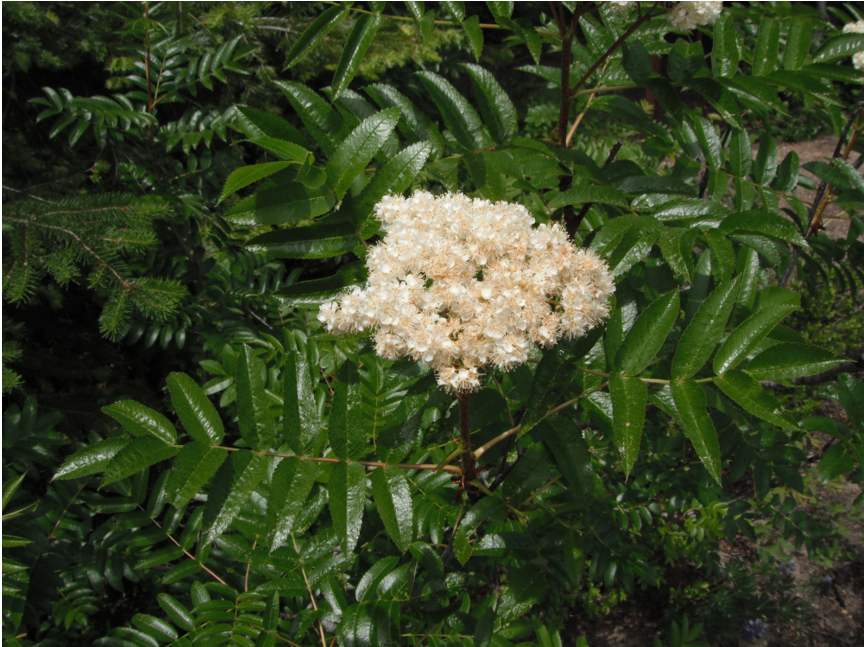 Relationships: There are about 100-200 species of Sorbus in the Northern Hemisphere and about half a dozen Sorbus species native to North America. Eurasian species have been introduced, become naturalized and interbred with native species; most notably, the European Mountain Ash, Sorbus aucuparia. Variety cascadensis, Cascade Mountain Ash, differs from the species by usually having 11 leaflets or fewer, and persistent stipules, whereas var. scopulina usually has some leaves with 13 leaflets. Var. cascadensis occurs mostly on the west slope of the Cascades, the Olympic Mountains, and the Sierras. There are intermediate forms on the east side of the Cascades and in the Wallowa Mountains. Amelasorbus jackii, a cross between Amelanchier alnifolia and S. scopulina has been observed in Oregon and Idaho.
Relationships: There are about 100-200 species of Sorbus in the Northern Hemisphere and about half a dozen Sorbus species native to North America. Eurasian species have been introduced, become naturalized and interbred with native species; most notably, the European Mountain Ash, Sorbus aucuparia. Variety cascadensis, Cascade Mountain Ash, differs from the species by usually having 11 leaflets or fewer, and persistent stipules, whereas var. scopulina usually has some leaves with 13 leaflets. Var. cascadensis occurs mostly on the west slope of the Cascades, the Olympic Mountains, and the Sierras. There are intermediate forms on the east side of the Cascades and in the Wallowa Mountains. Amelasorbus jackii, a cross between Amelanchier alnifolia and S. scopulina has been observed in Oregon and Idaho.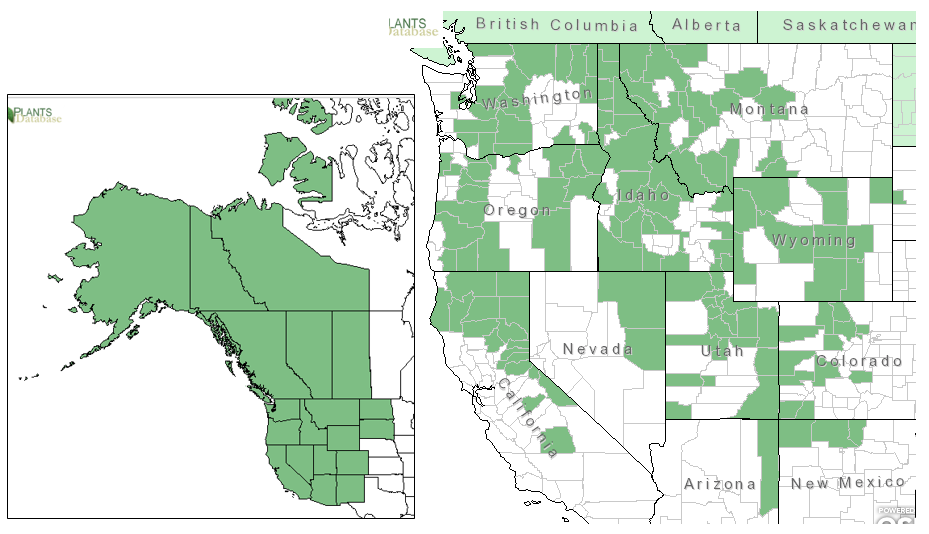

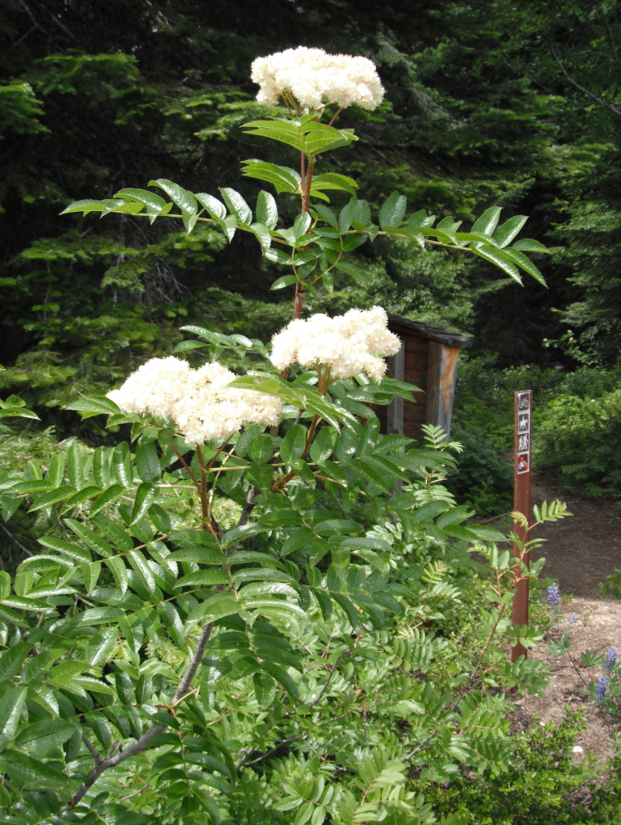 In the landscape: Our shrubby Mountain Ashes are most spectacular growing in clumps on hillsides. It is attractive when in bloom, but fall is its best season, with its yellow to peachy fall foliage and scarlet berries.
In the landscape: Our shrubby Mountain Ashes are most spectacular growing in clumps on hillsides. It is attractive when in bloom, but fall is its best season, with its yellow to peachy fall foliage and scarlet berries.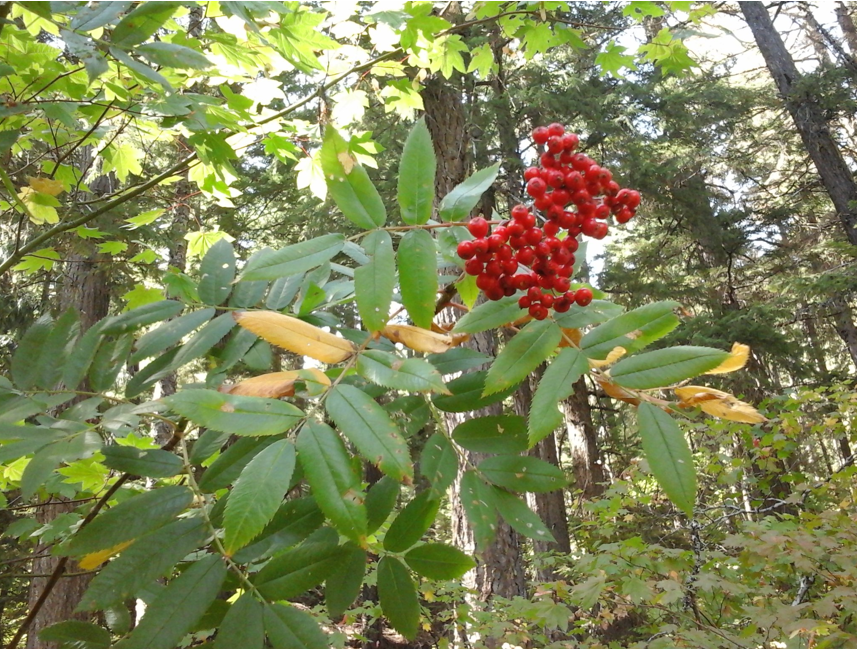

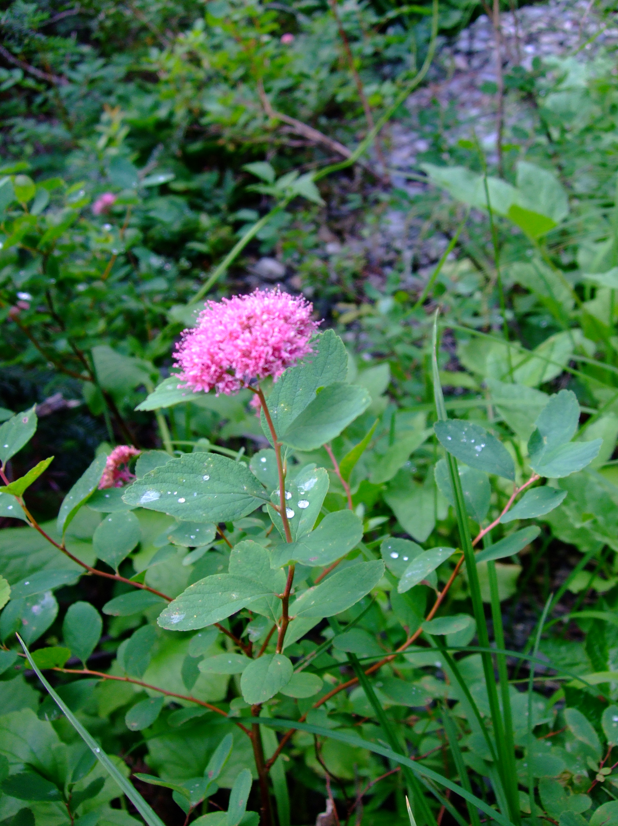 Names: The word Spiraea comes from a Greek plant that was commonly used for garlands. This species is also known as Spiraea densiflora. Splendens means shiny, densiflora means dense flowers. Subalpine Spiraea is also known as Rosy Spirea, or Rose or Mountain Meadowsweet.
Names: The word Spiraea comes from a Greek plant that was commonly used for garlands. This species is also known as Spiraea densiflora. Splendens means shiny, densiflora means dense flowers. Subalpine Spiraea is also known as Rosy Spirea, or Rose or Mountain Meadowsweet.